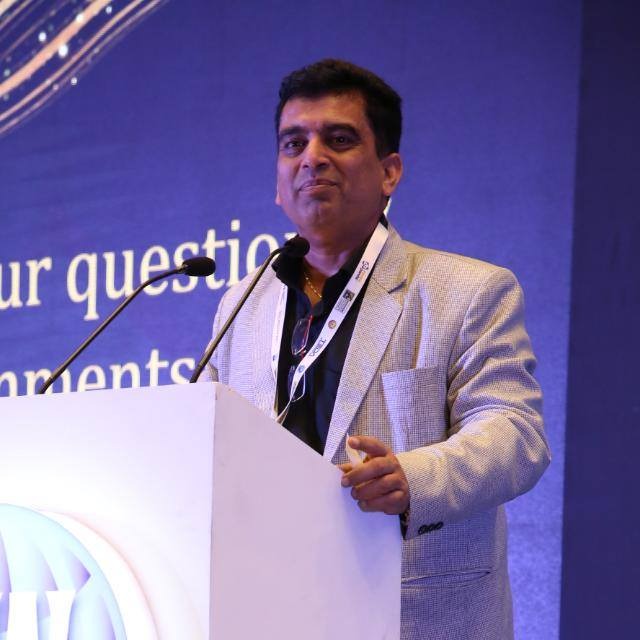English language learning in new environment‐ Challenges & Opportunities
Chander Moorjani in conversation with Kajal Chhatija
We are passing through a very tough and unpredictable phase in our life. Covid-19 has changed the way we live. It has impacted the education sector deeply and has changed the mode of teaching and learning. Meanwhile, teachers are scrambling to adapt content for an online platform and parents are juggling work responsibilities with caring for and educating their own children. Students themselves are faced with isolation, anxiety and uncertainty about the future.
Considering all these concerns regarding parents and educators, “EduDrone -We Connect” organised a session on ‘English Language Learning in the new environment‐ Challenges and Opportunities‘.
 The session was moderated by Kajal Chhatija and the guest speaker was Chander Moorjani, Director Sales, Square Panda India. The session threw the light on the various tips to learn a language and routines to overcome the tough times we are facing.
The session was moderated by Kajal Chhatija and the guest speaker was Chander Moorjani, Director Sales, Square Panda India. The session threw the light on the various tips to learn a language and routines to overcome the tough times we are facing.
Excerpts:
Considering NEP focuses on the mother tongue approach in learning a language, so does this mean that there is no need to include English as a language to our early learners?
With regards to the focus being on NEP 2020, what it says is that lets not just focus on the English language, but also let’s give equal importance to all the other Languages. In India, most children do not have an English Speaking Environment at home, in all these cases child would have a knowledge of his/ her mother tongue and also the language majorly spoken in the society (which can be different, for example, a child in Gujarat might have Telugu as his mother tongue, the language in the society of friends might be Gujarati & Hindi) all NEP 2020 is saying teach or communicate to the child in the language he understands.
Also, when we are using local languages, the connection with the child is very strong, communication becomes faster, also the child will store and retract the details quickly. Children can learn languages very fast till the age of 6, as 90% of the brain is developed by then. It is very easy for children to learn as many languages as possible till age 6 years, so it’s the best time to create a good environment for the students to acquire all possible languages. So the idea is to focus and give importance to all languages including English, so here we are talking of inclusive education.
You will find a lot of folklore and stories in the local environment which a child can easily imagine, visualise and relate to, thus helping the learning of the child.
What is the role of storytelling in the early years?
Stories are like fluids, they can fit into any language, age as well as curriculum. Stories do not require any teaching material or settings or books. Stories can cover various topics like folktales, folksongs, books, culture, imagination, visualisation, value education and everything an educator can think of. You can invite a grandmother or a father to your class to come and share stories. Stories also can connect to our past generations and can also help us imagine the future. They can create a lot of visualisation as well as vocabulary development for a child. Earlier stories were passed on from generation to another, gradually it became pictorial now it’s in written form too as well as documentaries and movies.
Storytelling in the early years is vital as it provides for a quality language listening to the child. Stories have characters, plots, vocabulary, indirect grammar learning and many more things embedded into it. Also with help of story learning, we can teach data management or rather an important activity like sequencing. It assists with comprehension, especially for narrative texts. Sequence structures help students of varying abilities organize information and ideas efficiently. Sequencing is also an important component of problem-solving across the curriculum, including science and social studies. SquareTales effectively covers all these aspects of foundational English language and ensures efficacy.
Also read: Impact of NEP 2020 on early childhood education
What are the basic challenges of a multilingual classroom?
I do not see the multilingual classroom as a challenge but it has many advantages. Children in the early years have an amazing ability to adapt to different languages. So a child will pick up the most spoken language in the society and if say for example five languages are spoken around the child, he/she will pick up all the five languages. Normally a child does self-talk in the local language or mother tongue, so it will be a big help to the child to synthesise all proceedings if we communicate in the language he/she understands.
What are the opportunities for multilingual classrooms?
Multilingual classrooms will aid in learning faster and thus the comprehending capability of a child will grow faster, helping him to learn more complex things at a faster pace. Thus the overall education levels will grow. Let’s just understand that knowledge and wisdom are not tied to a single language. As said by Ezra Pound, “The sum of human wisdom is not contained in any one language, and no single language is capable of expressing all forms and degrees of human comprehension.”
How to ensure that the learning outcomes are assured in this changing scenario?
We need to make the child a new role model, in these changing times, change is permanent. Let’s make the child a digital Learner and much above that a self-learner. Let’s make all learnings hands-on and experiential. Let’s refer to the ancient saying, “I hear things, and I forget them. I see things, and I remember them. I do things, and I understand them.”
How to assess the learners?
Assessments are done for various outcomes, so we have formative as well as summative assessments. We sometimes assess for learning, sometimes its assessment of learning. So it really helps if the educator is doing a continuous formative assessment, when she is measuring the desired learning outcomes and adjusting her speed, curriculum delivery or the language complexity etc to get optimum results at the end of the desired time intervals.
What are your suggestions for our educators?
“The illiterate of the 21st century will not be those who cannot read or write, but those who cannot learn, unlearn and relearn” – Alvin Tofler. The teacher will have to continuously evolve and transform, they will have to use digital mediums for optimum learning and also use blended learning all the time to have more focussed learning outcomes not from few but for every child in the class. Last but not least the child today is very smart, let’s not be a sage on the stage but be a guide by side and not teach but facilitate learning at all levels.
The views and opinions expressed in this article are those of interviewee and are personal and not necessarily reflect the views, thoughts, and opinions of EducationWorld.

















Add comment